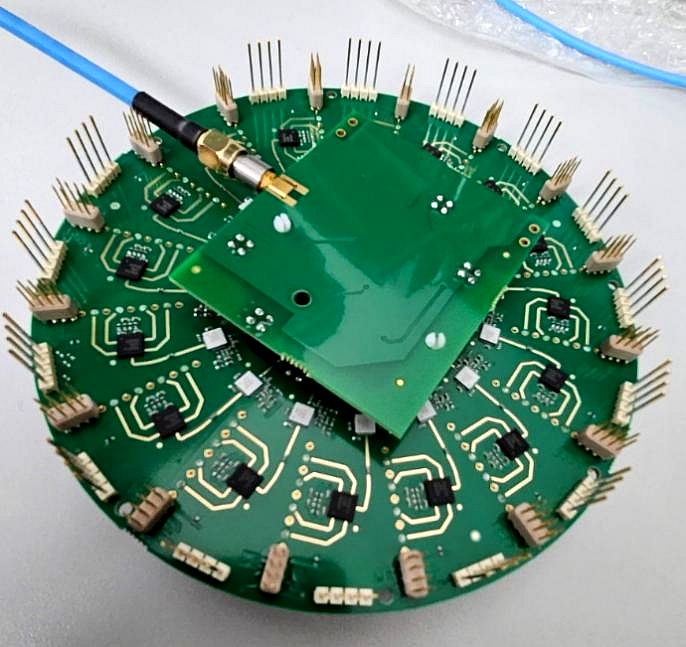
Medical equipment communication adopts wireless transmission PCBA solution
Product description
at presentMedical electronic products may lag behind consumer electronic products in some aspects, such as communication and billing products that have achieved wireless freedom. Medical products usually use wired or serial port 485\/232, etc.
Wireless transmission: Consumer transmission technologies, such as Wi-Fi, Bluetooth and NFC, can realize wireless transmission of data and information. This helps simplify the connection between medical equipment and other devices or systems, improving flexibility and convenience. For example, data can be transmitted from medical devices to cloud servers or mobile devices through wireless transmission for monitoring and analysis.
Data sharing: Consumer transmission technology can facilitate data sharing between medical devices. This is very important for multiple medical devices to work together or jointly manage patient information. By sharing data, different medical devices can better integrate and coordinate their work, Provide more complete medical services.
Remote monitoring: Using consumer transmission technology, remote monitoring of medical equipment can be achieved. Medical professionals can monitor the condition of patients by remotely accessing and controlling medical equipment. This is very beneficial for scenarios such as first aid, remote diagnosis and treatment, and can provide timely medical services and reduce patient wait times and inconvenience.
However, it should be noted that the following factors need to be considered when applying consumer transmission technology to the medical device transmission process:
Security: The medical industry has high requirements for data security. When using consumer transmission technologies, appropriate security measures must be taken to protect medical equipment and transmitted sensitive data from unauthorized access or tampering.
Compliance: The healthcare industry has many regulations and compliance standards that need to be ensured when using consumer transmission technologies, especially when it comes to the transmission of patient privacy and sensitive information.
Reliability and fault tolerance: The transmission process of medical equipment needs to have a high degree of reliability and fault tolerance. Consumer transmission technology may face problems such as interference and unstable connections, which may lead to serious consequences in the medical environment. Therefore, effective Mechanism to ensure transmission reliability and data integrity.
Bandwidth: High-frequency signals correspond to a larger frequency range and can provide higher bandwidth than low-frequency signals. Higher bandwidth means that more data can be transmitted, thereby supporting higher data rates and richer media. content.
Transmission distance: Under the same power, high-frequency signals have smaller transmission distance loss in wireless transmission than low-frequency signals. High-frequency signals can better penetrate obstacles, break through occlusion, reduce interference caused by multipath propagation, and Maintain good transmission quality.
Design PCBA anti-interference: High-frequency signals are easier to identify and distinguish than low-frequency signals, and have better anti-interference performance. The shorter wavelength of high-frequency signals makes them less affected by external electromagnetic interference and noise, and can be modulated and coding technology to further improve anti-interference performance.
Spectrum resource utilization: Wireless communication needs to achieve simultaneous transmission of multiple users on limited spectrum resources. High-frequency signals occupy smaller spectrum resources, which can support more users and higher spectrum utilization, improving the capacity of the wireless communication system.
To sum up, using high-frequency signals for wireless communication can provide larger bandwidth, better transmission distance, better anti-interference performance and higher spectrum resource utilization. These all help to achieve fast, reliable and Efficient wireless communications.
So why are high-frequency signals easy to transmit? The main reasons why high-frequency signals are easier to transmit than low-frequency signals in wireless transmission include the following points:
Smaller transmission loss: High-frequency signals have shorter wavelengths and can penetrate obstacles better. Compared with low-frequency signals, they suffer less attenuation and weakening during the transmission process, resulting in less transmission distance loss.
High-frequency signals have strong straight-line propagation capabilities: high-frequency signals have shorter wavelengths, and their propagation paths tend to propagate in a straight line. Compared with low-frequency signals, they are less likely to produce multipath effects (reflection, refraction, scattering, etc.), reducing the number of transmission problems. The multipath interference is beneficial to improving signal quality and anti-interference ability.
Strong anti-interference: high-frequency signals have high frequency, relatively low noise distribution, and relatively low cost to implement communication systems with the same bandwidth capacity. Compared with low-frequency signals, high-frequency signals tend to receive less interference in wireless environments , helps achieve stable transmission.
Richer bandwidth resources: High-frequency signals correspond to a larger frequency range, which can provide larger bandwidth resources and support the transmission of higher data rates and richer media content.
It should be noted that high-frequency signals also have some challenges, such as short transmission distance, poor penetration of obstacles, etc. Therefore, in practical applications, various factors need to be weighed according to the specific situation to select the appropriate frequency. range and modulation methods for efficient wireless communications.
Send Inquiry
